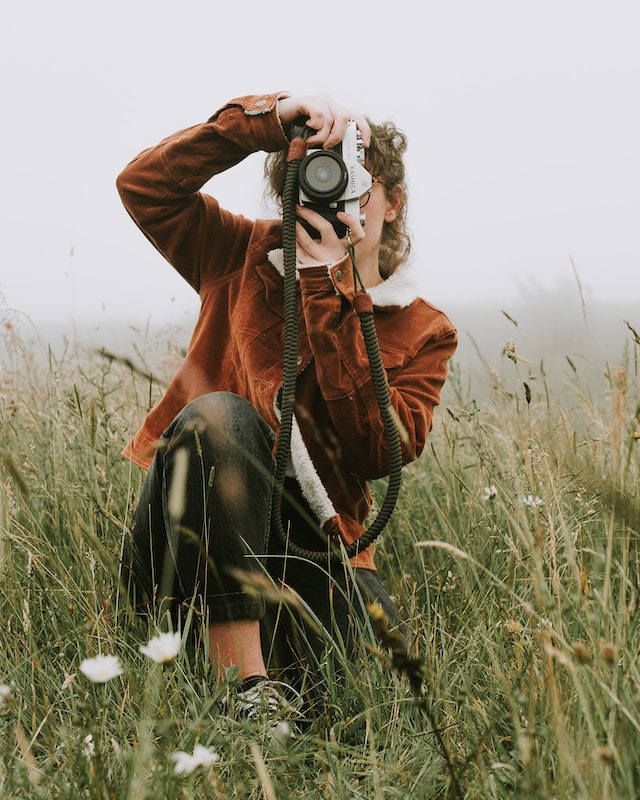
The intricate dance between the speed of the shutter, opening, and ISO and the enigmatic appeal of the golden hour are just two examples of how photography creates a symphony of technical expertise and aesthetic refinement. This article guides you through the five essential elements of photography, whether you’re a prospective photographer or a seasoned one. Prepare to embrace the magic of light, the strength of composition, and the limitless possibilities of the camera’s settings.

Mastering Composition: The Foundation of Great Photography
The foundation of great photography is composition, which acts as the artist’s stroke on the reality-based canvas. Photographers may create fascinating visual symphonies that immerse viewers in their creative storytelling by expertly arranging components inside the frame. You may create beautiful and captivating images by being familiar with fundamental ideas like the rule of thirds, leading lines, uniformity, and framing. Accept the flexibility to try out different compositions, each of which may be used to tell a different tale or evoke a range of emotions. As you learn more about composition, you will learn how each piece’s positioning influences your image’s atmosphere and message. Lines, forms, and negative space interact to produce a dynamic visual style that conveys ideas subconsciously to your audience.
Capturing the Right Light: The Key to Stunning Photographs
Light is the everlasting conductor at the center of photography, with the ability to transform a picture from a straightforward record to beautiful art. The sun lights the globe with ever-evolving moods and tones as it travels through space. Seize the wonderful moments of the golden hour—the tender embrace of dawn and dusk—by embracing the dance of light and shadows. Develop an awareness of light’s direction, character, and intensity at various times to give your subjects an air of ethereal brightness. Explore the mysterious relationship between light and shadow to see the sun’s magnificent symphony of colors. Only a few people have a keen eye towards this light. For example, if you are in the countryside and want to capture an amazing moment, you must think like an orange country photographer looking at the horizon and knowing where the sun falls.
Understanding Camera Settings: Taking Control of Your Photography
As a master of photography, you must also be a master of your tool—the camera. Accept the exposure triangle—aperture, speed of shuttering, and ISO—and use it to your advantage as you weave it melodiously into your compositions. The depth of field is determined by the aperture, much like the aperture on a stage, and it directs the viewer’s attention inside your composition. Shutter speed regulates the rhythm of motion, either catching the flowing motion of life or freezing a fleeting instant in time. The sensitive conductor ISO creates a subtle harmony between light and shade. You control the creative expression in this symphony of settings, guiding your photos into a world of limitless potential.
Developing Your Eye for Detail: Finding Beauty in Simplicity
The smallest brushstrokes of life may produce beautiful results in the mosaic of existence. Take up the practice of seeing, developing your ability to spot the smallest details, fascinating patterns, and alluring viewpoints. Look for the poetry in the commonplace to uncover a magical world. Admire the delicate interplay of shadows and light on an aging cobblestone street, the exquisite curve of a dewdrop on the petals, or the deep emotion shown in another person’s eyes. Every component has a tale to tell, only waiting for the keen eye to discover its secret appeal. You’ll discover that photography transforms into a contemplative discipline as you immerse yourself in the universe of details—a voyage of attention and appreciation. Become patient enough to notice and have the desire to investigate. Accept the unexpected and see the beauty in blemishes.
Post-Processing and Editing: Enhancing Your Artistic Vision
In addition to the world of the lens, post-processing and editing are other fascinating areas where photographic art may be found. Like a painter would apply the final touches to his painting, photographers do the same with their pictures. Explore the limitless universe of editing tools and unleash your artistic imagination by carefully adjusting exposure, contrast, color harmony, and sharpness. The final symphony should be approached with a professional touch, carefully enhanced, and the spirit of the recorded moment preserved. Intimate conversations with the artist in you take place during the editing process. As a result, your photography comes to life as a monument to your singular viewpoint and creative genius.
Conclusion
In conclusion, learning and exploring are ongoing processes in the art of photography. You may produce engaging and intriguing photographs that resonate with your viewers by mastering composition, understanding light, controlling photography settings, cultivating an eye for detail, and honing your post-processing abilities. Accept the creative method and let your viewpoint come through in your pictures. Happy Shooting!
